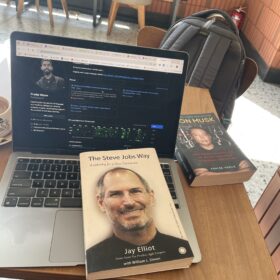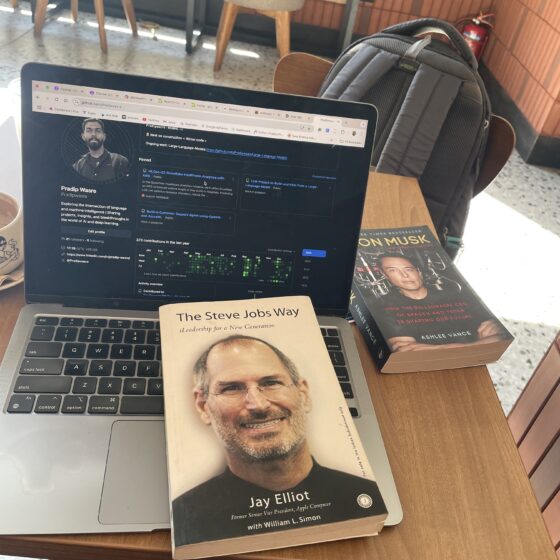W2: Day 5- Creating Multimodal AI Assistants with Tools and Agents
Exploring Multimodal AI: What We Achieved
Today marks an exciting step forward in building advanced AI capabilities. We explored multimodal AI, where language models like GPT-4 are equipped to handle more than just text—they can work with images, audio, and tools. By incorporating these modalities, we can build highly interactive, human-like assistants. Let’s take a deeper dive into what we’ve accomplished and the concepts we’ve learned.
Key Concepts Introduced Today
1. Agents in AI
Agents are software entities designed to autonomously perform tasks. They are key players in creating systems that handle complex workflows with limited human involvement.
Key Characteristics of AI Agents:
- Autonomous: They act independently without requiring constant input.
- Goal-Oriented: Focused on solving specific problems or achieving tasks.
- Task-Specific: Designed for a particular function, like booking a flight or generating images.
- Memory and Persistence: Can store and recall information over time.
- Decision-Making and Orchestration: Able to plan and execute actions in the correct sequence.
- Tool Usage: Can connect to databases, APIs, or the internet to enhance their functionality.
Real-World Example:
Today, we built an agent framework capable of generating images and audio using tools like OpenAI’s image generation and text-to-speech capabilities. These agents mimic human-like interactions by “speaking” and “drawing.”
2. Image Generation with DALL-E 3
One of the highlights of today’s work was integrating DALL-E 3 for image generation. This tool enables us to create vivid and contextually relevant images based on text prompts. For instance, generating an image of a vacation in New York City or a picturesque landscape in Paris.
How it Works:
- A text prompt is crafted to guide the model on what kind of image to generate. For example:
“An image representing a vacation in New York City, showcasing famous tourist spots in a vibrant pop-art style.” - The model processes the request and returns the image.
Applications:
- Generating marketing visuals for businesses.
- Personalizing content for users in real-time.
- Assisting designers by automating image creation.
Note on Cost: Be mindful when using image generation models, as they may have associated costs per request.
3. Text-to-Speech (TTS) with OpenAI
We also incorporated text-to-speech (TTS) functionality to give our AI assistant a voice. Using OpenAI’s TTS model, we can convert text into audio, making interactions more engaging and accessible.
Key Parameters Used in TTS:
- Model: Specifies the voice model to be used (e.g., “tts-1”).
- Voice: You can customize the assistant’s voice (e.g., “Onyx” for a formal tone or “Alloy” for a casual tone).
- Input: The text you want the assistant to say.
Applications:
- AI assistants for customer service.
- Interactive voice assistants for devices.
- Accessibility tools for the visually impaired.
By combining TTS with the image generation capabilities, we created a multimodal assistant that can both speak and display visuals.
4. Building a Multimodal AI Agent
The final step of the day was bringing everything together. We integrated tools and techniques to create an AI agent capable of:
- Responding to text queries in natural language.
- Generating images based on context or requests.
- Producing speech to make interactions more lifelike.
Framework Overview:
- History of Conversations: The agent maintains a record of past exchanges, allowing for contextual responses.
- Decision-Making: The agent determines whether to generate text, an image, or speech based on the user’s input.
- Tool Usage: Calls specific tools (like image generation or TTS) as needed.
Example Scenario:
A user asks, “What does a vacation in Tokyo look like?” The agent responds with both a spoken description and a vibrant image of Tokyo’s iconic landmarks.
Libraries and Tools We Used
Here’s a quick overview of the main libraries and tools we leveraged today:
- OpenAI API:
- Image Generation (DALL-E 3): For creating images from textual prompts.
- Text-to-Speech (TTS): For converting text to audio.
- PIL (Python Imaging Library):
- For handling and displaying images generated by DALL-E.
- Pydub:
- For audio playback, allowing us to hear the TTS outputs.
- Gradio:
- To create an interactive user interface where users can chat with the AI assistant and view multimodal outputs.
Recap of Key Points from Recent Articles
As we wrap up Week 2, here’s a refresher of the key points we’ve covered so far:
- Interactive Interfaces with Gradio:
- Learned how to create user-friendly UIs for AI systems.
- Building AI Assistants with Tools:
- Integrated tools like APIs to enhance LLM functionality.
- Advanced Tool Usage:
- Explored how to define and implement tools for tasks like fetching data or performing calculations.
- Multimodal AI:
- Introduced image and audio capabilities, moving beyond text-based interactions.

